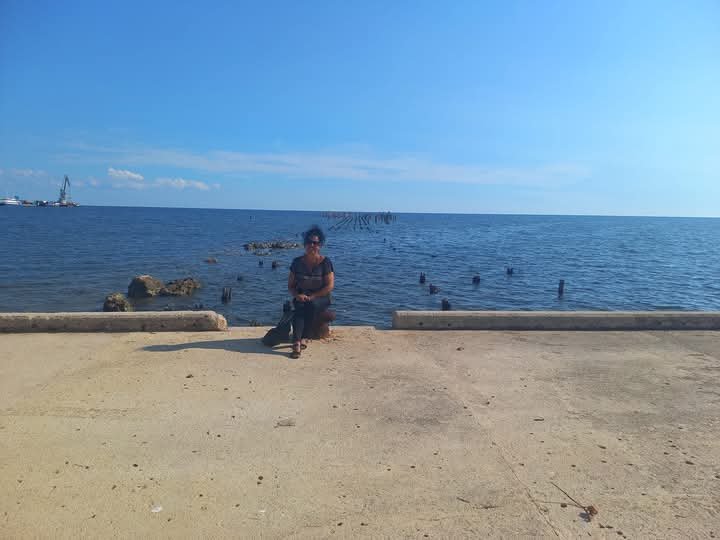
A lo lejos, el nuevo puerto de Batabanó
Batabanó.Lugar mas próximo de la Isla de la Juventud, tierra bañada de mar y azotada también por los desastres nsturales.
La zona más proxima a la costa se nombra Surgidero de Batabanó, conocida por su puerto. La ciudad como muchas ciudades cubanas tienen la impronta de la cultura española y americana, ponderadoras del desarrollo de la zona.Queridos amigos de @worldmappin qiiero llevarlos a visitar un sitio muy especial al sur del occidente de Cuba:
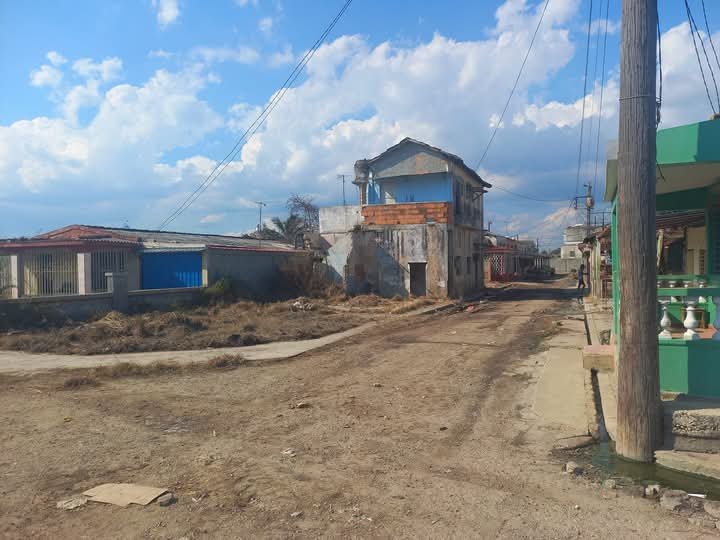
Batabanó exhibe muchas heridas ocasionadas por el tiempo y el olvido. Muchos edificaciones que tuvieron gloria hoy no están. Podemos visitar La Terminal de Ferrocarril visitada por José Martí y su padre Don Mariano; el Puente del Chivo; el hotel Dos Hermanos y su homólogo en la esquina contraria El Cervantes, donde se inició el inmenso cantante Lino Borges, en la interpretación de un género musical cubano, declarado Patrimonio de la Humanidad: el bolero.
La iglesia, las casas de madera, los puentes, los canales a modo de desagües. El lugar donde estuvo la casa en que falleció, en 1894, el célebre violinista mexicano Juventino Rosas, autor del mundialmente conocido "Vals sobre las olas". Muy cerca un monumento alegórico con escultura del bejucaleño René Negrín.
Los amplios caminos que una vez fueron importantes calles asociadas al puerto, nos llevan al muelle que si bien constituyó un error de cálculo marítimo, fue de una belleza y esplendor inmensos en lo que fuera El Arenal.
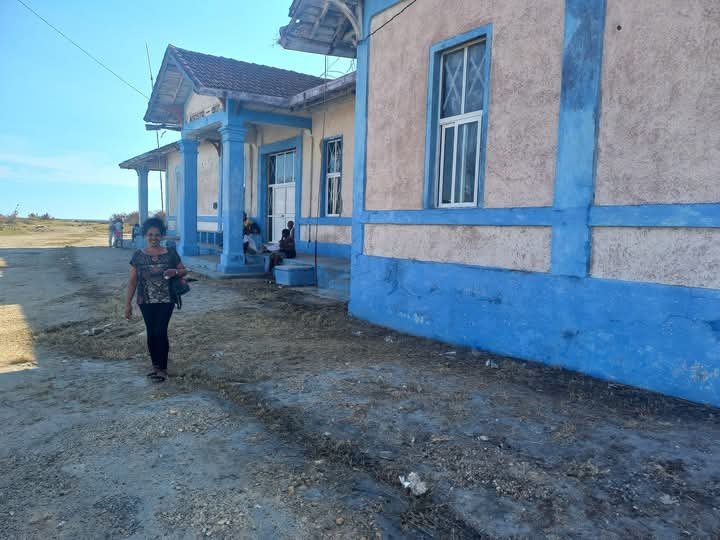 | 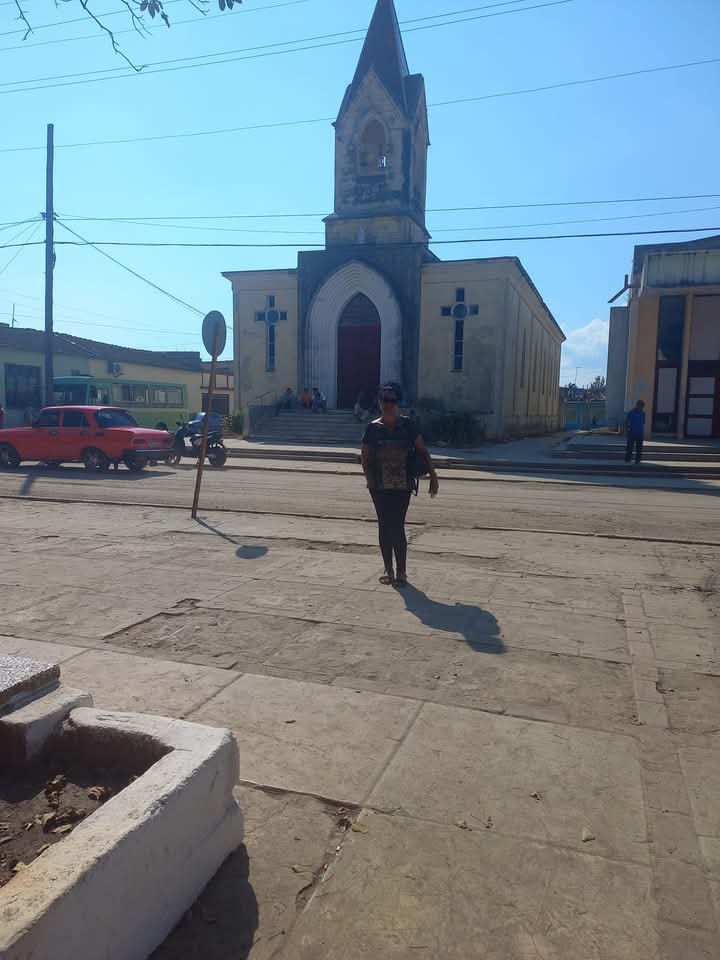 | 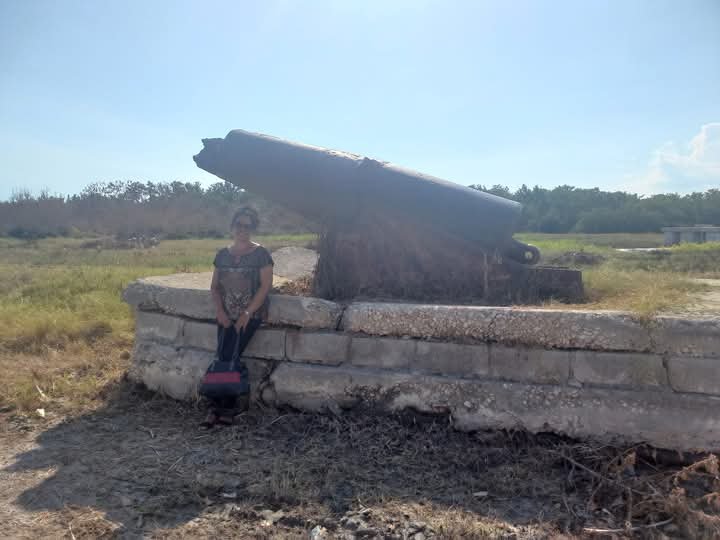 |
|---|
Allí está la cordillera de pilotes sumergidos en el mar, el nuevo puerto de cabotaje y el canal de pesca, para relatarnos una historia que no se pierde en el tiempo.
De Surgidero de Batabanó fue la escultora Rita Longa, una de la más importante artistas del siglo XX cubano. Lo es Juan Carlos García Guridi, investigador, poeta y repentista. Este soneto trae el canto a su Batabanó.
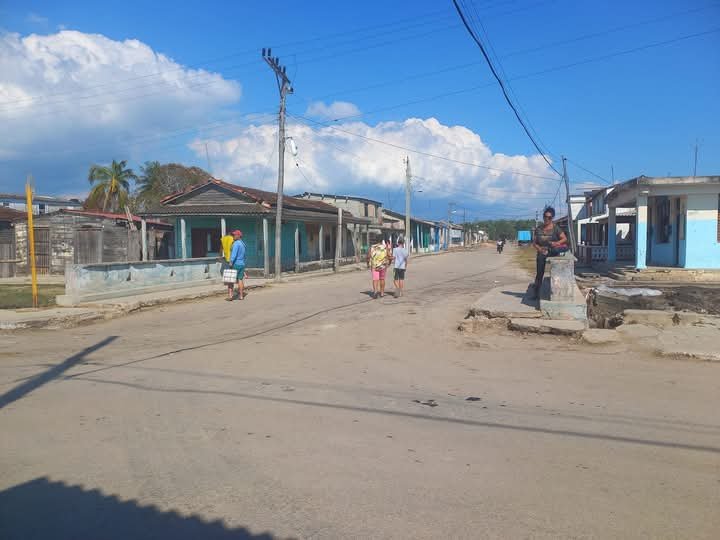
POSTAL
Ahora que abandonado y destruido
Surgidero no es más que un pueblo en ruinas
crece un atardecer en las retinas…
Soportarlo no sé cómo he podido.
Todo… Hasta la memoria se ha perdido,
no se mueven del viento las cortinas,
y aunque pasan las horas peregrinas
el tiempo es un viajero detenido.
Las calles con las zanjas se confunden,
y las casas son barcos que se hunden
en el inmenso mar de la existencia.
El pueblo que ayer fue próspero y bello
hoy resume, sin alma y sin resuello,
los pálidos colores de la ausencia
Y cuando creí que estaba dejando un trozo de mi alma en este pedazo de tierra cubana, por nada a cambio, entendí que era la retribución a una deuda creada por los tuneros porque antes uno de los máximos exponentes de la poesía popular en Cuba, Francisco Riverón Hernández (1917 - 1975) en su poemario Caimán Sonoro, había dedicado una de sus décimas mi tierra, Victoria de Las Tunas. Les regalo un fragmento.
¡Oh, Victoria de Las Tunas!
Vengo de quererte a ratos,
aun hay polvo en mis zapatos
de tus veredas montunas.
Te pregunté por las lunas
a campo arriba y a pie,
vieron al Cucalambé,
hermano de surco y monte
con su criollo sinsonte
de tabaco y de café.

Batabano, navigator in time
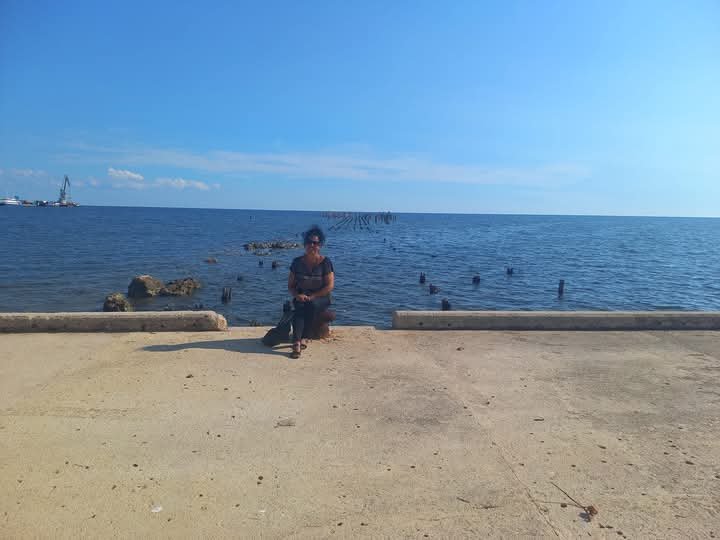
In the distance, the new port of Batabanó
Batabanó. The closest place to the Isle of Youth, a land bathed by the sea and also hit by natural disasters. The area closest to the coast is called Surgidero de Batabanó, known for its port. The city, like many Cuban cities, has the imprint of Spanish and American culture, reflecting the development of the area.Dear friends of @worldmappin, I want to take you to visit a very special place in the south of western Cuba:

Batabanó exhibits many wounds caused by time and oblivion. Many buildings that had glory are not there today. We can visit the Railway Terminal visited by José Martí and his father Don Mariano; the Chivo Bridge; the Dos Hermanos hotel and its counterpart on the opposite corner El Cervantes, where the immense singer Lino Borges began performing a Cuban musical genre, declared a World Heritage Site: the bolero.
The church, the wooden houses, the bridges, the canals as drains. The place where the house was where the famous Mexican violinist Juventino Rosas, author of the world-famous "Waltz on the Waves", died in 1894. Nearby is an allegorical monument with a sculpture by René Negrín from Bejuca.
The wide roads that were once important streets associated with the port, take us to the dock that, although it constituted a maritime miscalculation, was of immense beauty and splendor in what was El Arenal.
 |  |  |
|---|
There is the mountain range of piles submerged in the sea, the new coastal port and the fishing channel, to tell us a story that is not lost in time.
From Surgidero de Batabanó was the sculptor Rita Longa, one of the most important artists of the Cuban 20th century. Juan Carlos García Guridi is, researcher, poet and repentista. This sonnet brings the song to his Batabanó.

POSTAL
Now that abandoned and destroyed
Surgidero is nothing more than a town in ruins
a sunset grows on the retinas...
I don't know how I could endure it.
Everything... Even memory has been lost,
the curtains
do not move from the wind,
and although the pilgrim hours pass
time is a stopped traveler.
The streets with the ditches are confused, and houses are sinking ships
in the immense sea of existence.
The town that yesterday was prosperous and beautiful
today it summarizes, without soul and without breath,
the pale colors of absence.
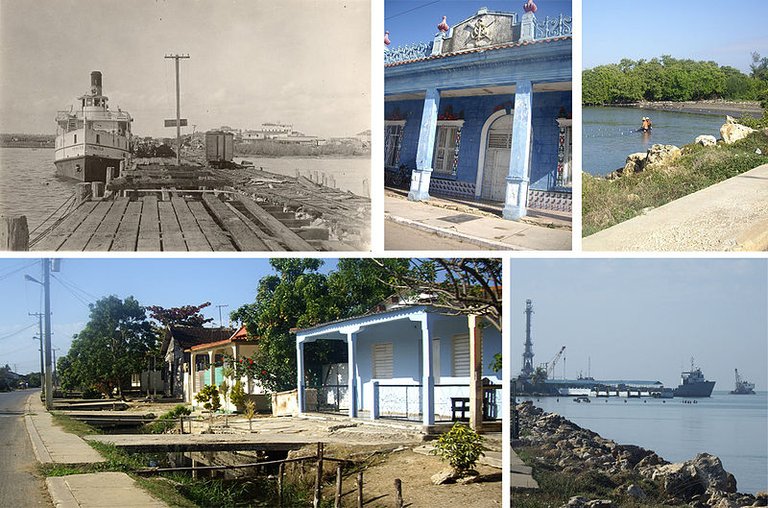
Batabanó
And when I thought I was leaving a piece of my soul in this piece of Cuban land, for nothing in return, I understood that it was retribution for a debt created by the people of Las Tunas because previously one of the greatest exponents of popular poetry in Cuba, Francisco Riverón Hernández (1917 - 1975) in his collection of poems Caimán Sonoro, had dedicated one of his tenths to my land, Victoria de Las Tunas. I give you a fragment.
Oh, Victory of Las Tunas!
I come from loving you at times,
There is still dust on my shoes
of your mountain paths.
I asked you about the moons
upfield and on foot,
They saw the Cucalambé,
brother of furrow and mountain
with his criollo mockingbird
tobacco and coffee.
This post has been written and documented by me, it does not contain AI. The photos used are my property

Me gustaron mucho los poemas y por supuesto el tour por el lugar.
Gracias, es una fuente de buenos artistas
You can check out this post and your own profile on the map. Be part of the Worldmappin Community and join our Discord Channel to get in touch with other travelers, ask questions or just be updated on our latest features.
Beautiful place,Check out some really amazing scenery photos ❤️
The sea towns have a magical atmosphere. thanks for visiting my blog
Pareces una gaviota en el mar. creo que definitivamente algo de ti se quedó en Batabanó y algo de Batabanó vive e ti. gracias por el paseo y la poesía.
Algo siii. Algo de Cuba hay en mi 🤭
Disfruto cada uno de tus recuentos, aprendo contigo y de tí. Gracias por tu pasión y tu presencia.
Gracias a ti por leer. Así vamos acompañándonos a un viaje y otro ... un abrazo
!LADAY